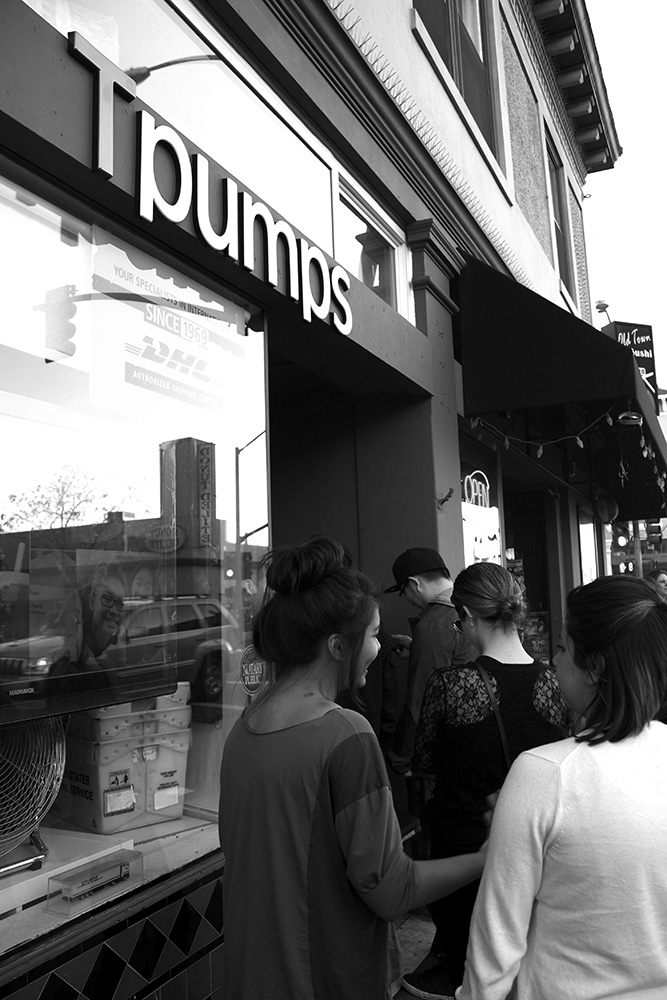

Former mayor of San Mateo Sue Lempert wrote in the Daily Journal about the practicality of moving away from the traditional storefront that dominates San Mateo’s downtown area while still keeping the city’s authentic strengths, such as ethnic eateries and a balance of chains and homegrown stores. And, indeed, San Mateo seems to be in the process of change; in October of 2012, the City Council of San Mateo relaxed retail rules for storefronts downtown, allowing for office space to be used on the ground floor of downtown buildings, a space previously limited to commercial business leases open to the public.
The rule change may be contributing to recent crowding downtown; this change both reflects downtown San Mateo’s evolution away from a retail-based downtown and gives possible reason to its recent lack of available parking (even on weeknights).
While those who Lempert calls “downtown purists” previously objected to increased office space downtown, arguing that empty workspaces would diminish nightlife, the change seems to have sparked the opposite result; young, local workers now eat and shop downtown because they are so close to its many restaurants, which number around 120. In recent months, downtown San Mateo’s restaurants have experienced a seeming renewal; the recent closing of Tres Amigos, which operated for 25 years, was closely followed by the opening of Chipotle, signifying a higher demand for new and successful chain restaurants.
Aragon students have noted the addition of Chipotle, warmly welcoming its nearby presence and convenience. “Its nice that Chipotle is here now because you usually have to drive to Foster City to get it,” says junior Veronica Wang.
However, tea stores seem to dominate the downtown high school hangout niche.
It seems the most popular choice for “boba” or “bubble” tea is B Street’s Tpumps, one of downtown’s most visibly crowded places, which often has a line out the door consisting almost exclusively of students from Aragon and San Mateo High School. “Tpumps just tastes better,” say senior Rahul Joshi. He adds, “It has more customization, a homey feel, and it’s not a chain like Teaway or Quickly.”
Tpumps has made a notable effort to reach out to its young fan base. Recently, Tpumps sponsored freshman Ryan McAuliffe’s hockey team, the Golden State Eagles. McAuliffe says, “[Alex, the owner] was very appreciative and supportive of our team and our love for their tea. He stated that he could sponsor our team with 15 drinks, and he wanted us to come as a team in our jersies to collect the offer… It meant a lot to us that they provided us with free drinks.”
Perhaps due to Tpumps’ domination of the downtown tea market, Teaway and Sweet Orchid, two local tea stores, have closed in the past few months. Nonetheless, The Daily Journal recently remarked that a new tea store may be planning to open in place of Sweet Orchid, begging the question: does downtown suffer from a lack of variety?
While the composition of downtown retail may be renewing itself with last year’s rule change, its variety—or lack thereof—may not change much in the foreseeable future. In the past, dramatic changes have sparked marked opposition; when the movie theater was proposed in 2001, it was met with concerns of increased traffic and crime. In addition, while downtown San Mateo used to host department stores such as J.C. Penney and Levy Brothers, it now has a notable lack of retail clothing stores.
Sophomore Jennifer Saldana says, “I don’t think there is enough variety downtown. There are a lot of the same types of restaurants.” She goes on to explain, “There are lots of pizza places like Pizza My Heart, Redbrick, Mr. Pizza Man… There are also too many Asian food restaurants.” Joshi comments, “There are no activities, just food… I would like to see something like a laser tag center downtown.”
Overall, downtown San Mateo seems to be moving towards some change in the future. With its close proximity to campus, downtown’s renewal will likely be shaped at least in part by the Aragon community.



